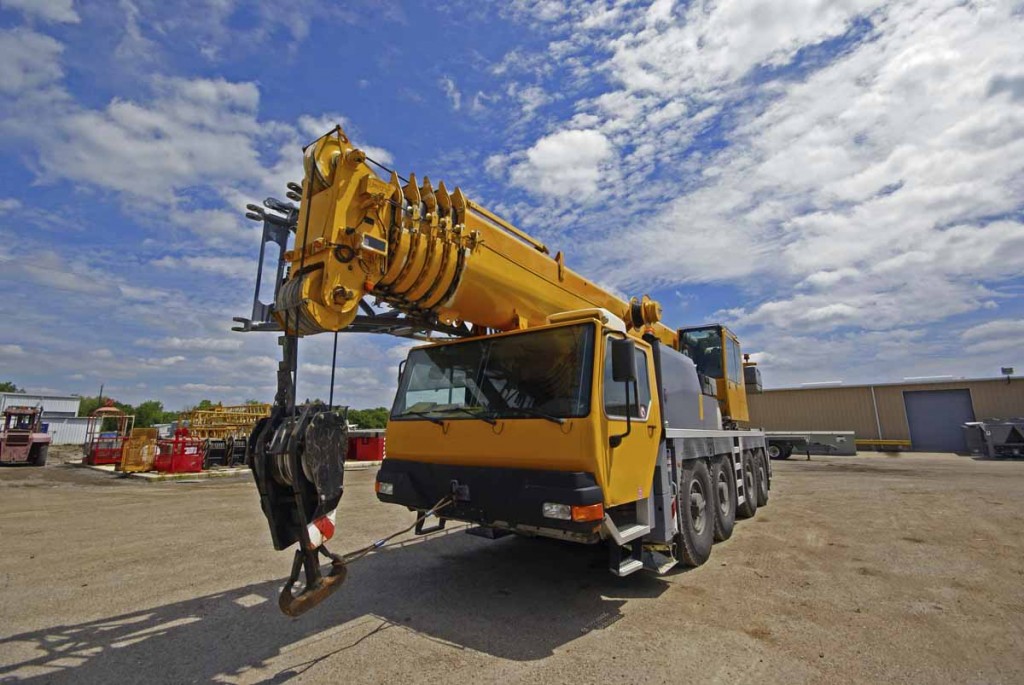
Crane Service Manual & Troubleshooting Guides
- Maestro
- Mark 4E2
- IFlex 5
- Mentor EI65
- EI65
- PRS 40
- PRS 80
- PRS 35
- PRS 75
- IScout – IFlex 2 (Grove)
- DS350G-GW
- DS350C
- DS350 G Boom Control
- DS350 Lattice Boom
- DS350 RCL (Link Belt)
- DS350GM (Grove)
- Mark 3E1
Sample Crane Service Manual Section
Troubleshooting Moisture – Maestro Crane Service manual
The maestro contains electronic components in various locations, such as central unit, sensors, junction boxes etc. These internal components cannot be designed to withstand exposure to moisture over a longer period of time. For this reason, the housings of the components are water protected according to IP 65. If you find water or moisture inside any of the housings, the source for the water ingress has to be detected and corrected to ensure proper operation.
There are two major possibilities for the occurrence of excessive moisture inside an enclosure:
1) Water ingress 2) Condensation
This outline gives instructions for detecting the cause for excessive moisture by using simple troubleshooting methods and how to prevent the moisture ingress from happening again.
6.1 Water Ingress
There are 6 possibilities for water to enter an enclosure:
1) Spray Cleaning
2) Missing / Loose Screws
3) Bent Lid
4) Defective Gasket
5) Loose Strain Relieves
6) Water Entry Through External Cabling
It is possible to find out the source of water ingress by going through the following steps and ruling out one possibility after the other until the cause is identified:
1) Spray Cleaning
The enclosures used for the maestro system are water protected to IP 65. This means protection against the environment, such as rain. However, through the use of spray cleaner at short distances, it is possible to force water through the gasket or strain relieves. For this reason, avoid spraying any components from short distances with spray cleaners. Convey this fact to any member of a maintenance crew.
2) Missing / Loose Screws
All screws have to be present and to be equally tight to ensure water protection of the enclosure. If there are screws missing, replace them. If no screw is missing, check the tightness. If any were loose, then open all screws and then re-tighten them equally.
3) Bent Lid
An enclosure will only seal correctly if the lid is not bent. To check this, loosen all screws of the lid, take the lid off the box and visually inspect it for deflection. If the lid is bent or damaged, it needs to be replaced. Try to determine what has caused the lid to be bent and eliminate the reason for that. Order a new lid through your Hirschmann representative.
4) Defective Gasket
The gasket underneath the lid seals the unit. The gasket needs to be in good condition in order to seal correctly. If the gasket is torn, brittle or severely bent, it needs to be replaced. Order a new gasket through your Hirschmann representative.
5) Loose Strain Relieves
The strain relieves allow cabling to enter the box without allowing water to enter it. The strain relieves have to be correctly tightened in order to do this. Check the tightness by taking the external cable into one hand and carefully trying to turn it. If the internal wires turn with the outer cable, the strain relief is loose. Get a new grommet (insert) through your Hirschmann representative and replace the existing one with the new one. Tighten the strain relief correctly. Note: Whenever a strain relief is opened, i.e. to replace a cable, a new grommet needs to be used. Never re-use any grommet or the strain relief will not seal properly!
6) Water Entry through External Cabling
Even with a tight strain relief, water may still enter the box through the inside of the cable. In this case, you have to find out why and where water enters the cable. Look for damages to the cable itself and inspect the opposite side of the cable. In example, if the cable comes from a connector that is full of water, the water will run through the inside of the cable and fill up the central unit, too.
6.2 Condensation
In a climate with high humidity and rapidly changing temperatures, condensation can happen inside any enclosure, usually the larger the volume of the box, the more likely. In this case, water drops build up on the inner components when humid air is trapped inside the box. With condensation, water tightness is not a problem – the box is sealed just fine, which is what prevents the trapped air from exiting the box. There are two ways to deal with condensation:
1. If the volume is very small, a desiccant bag might be able to soak up the air’s humidity.
2. If the effect is more severe, the only way to get rid of this effect is then to give the box the ability to breath without sacrificing its water tightness. Contact your Hirschmann repre- sentative for breathing elements to than can be added to the box and will help to reduce the effects of humid climates.



